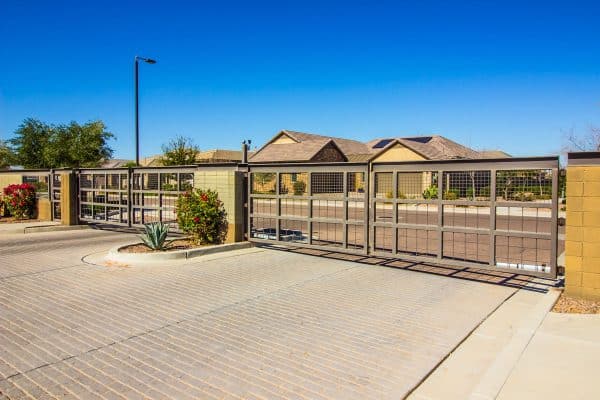If you would like to build or replace an existing garden gate, it would be helpful to know which dimensions are suitable. Are you wondering how wide the garden gate should be? We researched the topic, and this is what we discovered.
Typically, garden gates have a width of three feet to four feet. If the gate measures more than four feet in width, installing a double gate in place of a single gate would be wiser.
Dive in to learn how to measure for a garden gate. We will also discuss whether a fence gate should swing in or out and some ways to make your gate more secure.
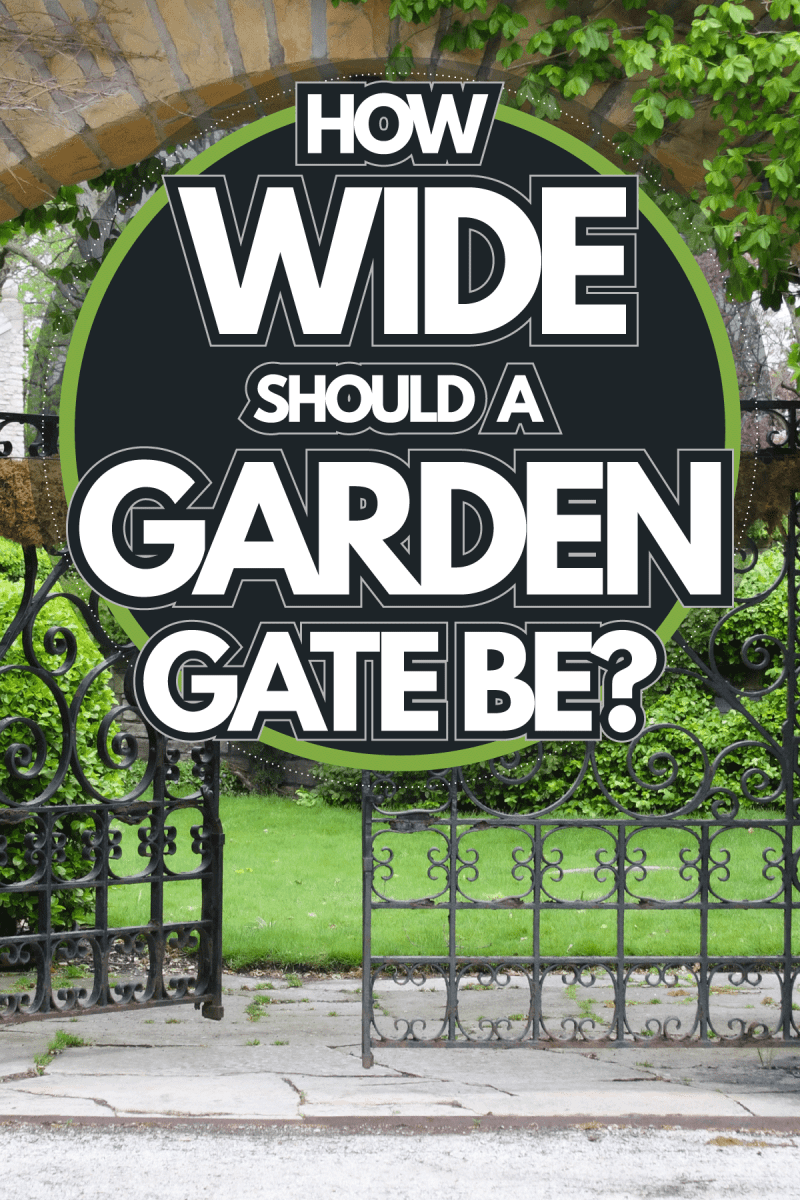
What are the Dimensions of a Garden Gate?
A garden gate minimizes the possibility of intruders trespassing your property. At the very least, it bars animals and young children from entering the garden.
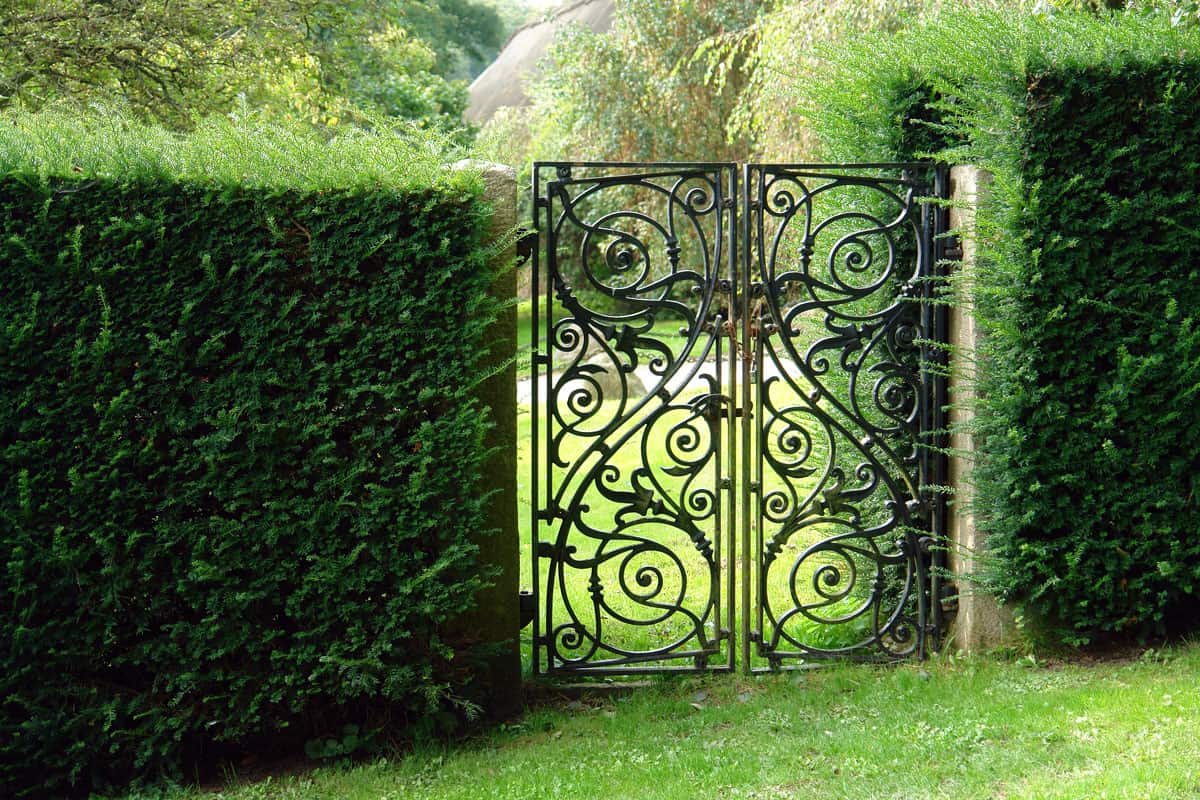
Width
The gate should be wide enough to let you walk in comfortably and make it easy to bring a wheelbarrow or lawnmower into the garden. For this reason, the gate should measure about three to four feet wide. A four-foot width is preferable when you need to get a wheelbarrow in without squeezing.
In some instances, you may need to bring a tractor or a wider wheelbarrow to the garden, thus necessitating a gate wider than four feet. In such cases, a double gate with a latch in the middle instead of a single gate would be suitable.
Fixing the double gate reduces the possibility of the gate sagging in the middle if it is not adequately supported. Additionally, bracing the gate provides extra support that enables it to hold in position longer.
By lodging a compression brace, most of the gate's weight rests on the bottom hinge. This load transfer reinforces your entrance, making it more stable. As a result, it sags less and lasts longer.
Height
Typically, a garden gate is six feet tall. This height keeps animals out of the garden and provides privacy. However, the gate's rise can range from three feet to six feet. When you opt for a gate taller than four feet, secure it using three hinges to support its structure.
The gate's height is not limited to its original height during manufacturing. You can use extenders to make the gate taller. A taller gate creates more climbing space for plants and enhances your entrance's aesthetic appearance.
How to Measure for a Gate
When measuring for a single garden gate, it is crucial to allow enough space for the gate's width and the posts or wall plates to which it will be attached and latched. You should also leave about 10 millimeters between the gate and the poles. For double gates, you add an extra 10 millimeters between the two gates.
Measure the gate's opening at the top, middle, and bottom to determine whether there are any discrepancies. If the measurements vary, use the smallest width to order for a gate. Note that the actual size of the gate will be smaller to accommodate both hinges and latches.
Consider the slope of the ground when measuring the actual height of the gate. If the ground is not level, measure how far up you want to suspend the gate to enable ease of opening. Leaving a two-inch allowance at the bottom often allows the gate to open without scratching.
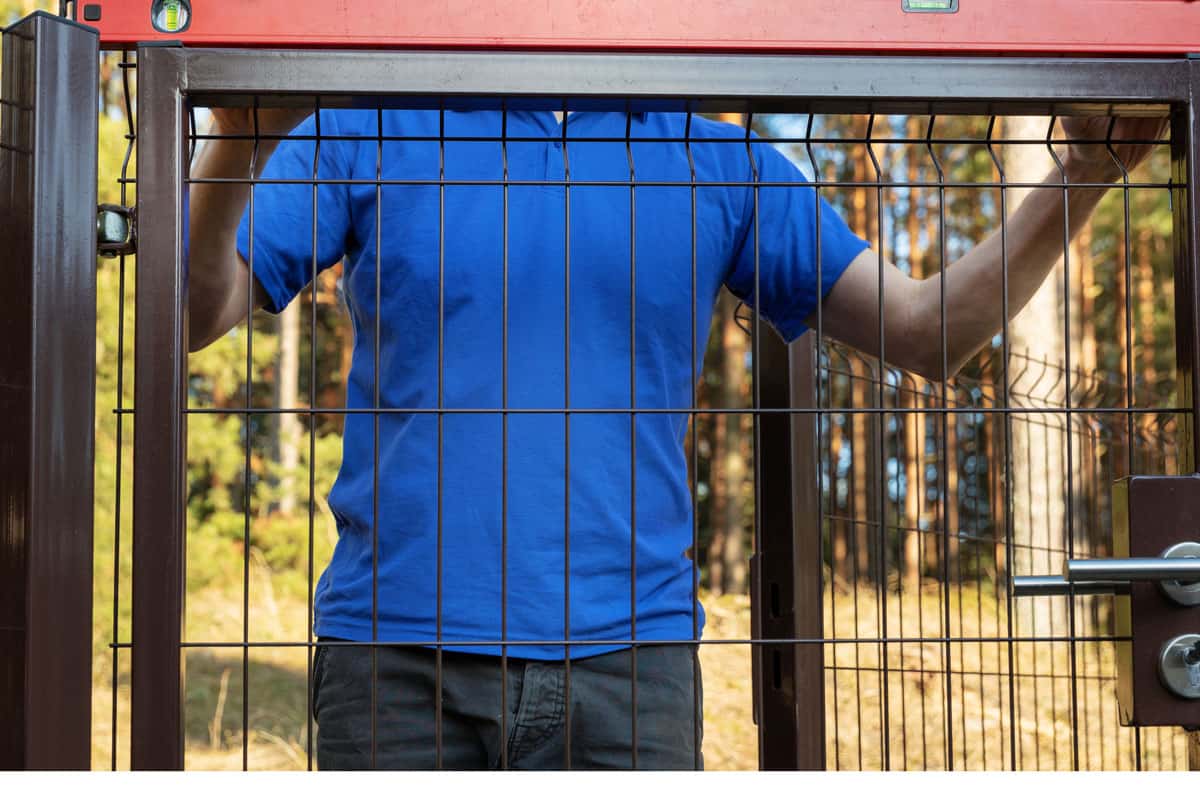
You should leave half an inch to one inch from the top of the wall's plates when determining how far up the gate will rise. This allowance makes up for any variations in the plates' height, resulting in a beautiful finished product.
Measure the actual height of the posts or plates. If they have different measurements, use the shorter post to calculate your gate's rise. Subtracting two inches from the bottom and an inch from the top gives you the actual height of your entrance.
You can watch this video for a visual guide on measuring the gate.
Should a Fence Gate Swing In or Out?
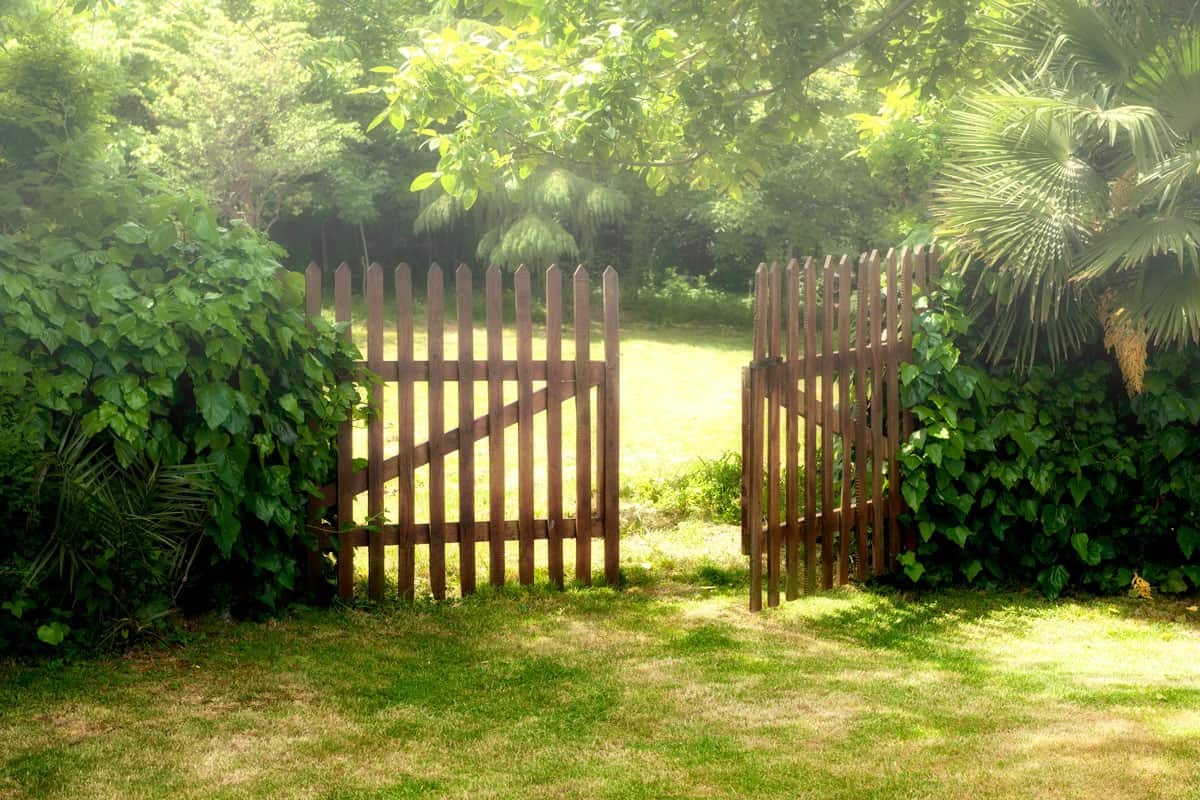
Some single gates have latches that swing on either side, enabling them to open inwards or outwards. In contrast, double gates often open in a unilateral direction. Thus, considering your gate's swing direction is necessary if you are mounting a double gate.
Your gate should always swing inwards. Opening inwards is inviting in that the gate lets people into your home. It also avoids obstructing a road or pathway.
If the gate opens outwards, it can block public spaces, which is risky. The gate can only swing outwards if there is enough exterior space to avoid creating unnecessary barriers.
Allow sufficient clearance for the gate to open towards your property to enhance its efficiency and functionality. If there are obstructions around the gate, it may be challenging to open, making using the gate stressful.
Which Side do Hinges Go on a Gate?
Correctly fixing hinges is crucial to your gate's efficient operation since they balance its weight and rotation.
The hinges are mounted on the front or rear side of the wall plate or post. Installing them on the interior or exterior of the gate determines the direction of the gate's swing.
Hinges can be on the right hand or left hand. This handing is determined by the side of the hand on the outer side of the gate.
The hinges have a longer and shorter flap. The more extended hinge flap is secured to the gate, while the shorter flap is attached to the post or wall plate.
Typically, the hinges are installed at the top and bottom of the gates. However, you may add a third hinge in the middle of a heavy gate for extra support. Ensure that you position the hinges evenly and align them properly, as misalignment will alter the gate's movement.
How Can I Make My Gate More Secure?

If you are considering ways to make your gate more secure, here are some options you can implement.
Carefully Choose your Lock Mechanism
Locking your gate is one way you can use to keep the intruders out. Keyed padlocks are an easy and cost-effective way to secure your gate. However, this method's effectiveness depends on whether you always remember to lock the gate.
Installing a keyed handle improves the padlock's shortcoming by ensuring that your gate remains closed at all times. You can reinforce the effectiveness of the keyed lever by installing a deadbolt. Although the deadbolt requires more effort to mount, it is also more secure.
You can also invest in a keyless entry mechanism. While it may be more costly to install, this option offers convenience and flexibility. You do not have to carry a key with you all the time. In addition, you can change the security code when you feel unsafe.
Get Rid of Step-Ups
Do not leave items that can aid in climbing the gate, such as ladders, wheelie bins, and garden furniture lying freely around your entrance. It would be best if you chained or locked everything up.
In addition, have the timber cross members of your gate fitted on the inner side of the gate or cover them with panels. This way, you eliminate any foothold for trespassers.
Maintain the Gate and its Surroundings
Keep the gate clear from any shrubs or bushes that hinder its visibility. Also, install lighting above the entrance and keep it in good working condition.
Regularly inspect the gate for signs of wear and tear, which would compromise its ability to keep your home secure. If you have a wooden gate, check for splits or rot. For a metallic gate, examine for rust damage.
Regularly lubricating the hinges also keeps your gate in optimal functioning condition.
Wrapping Up
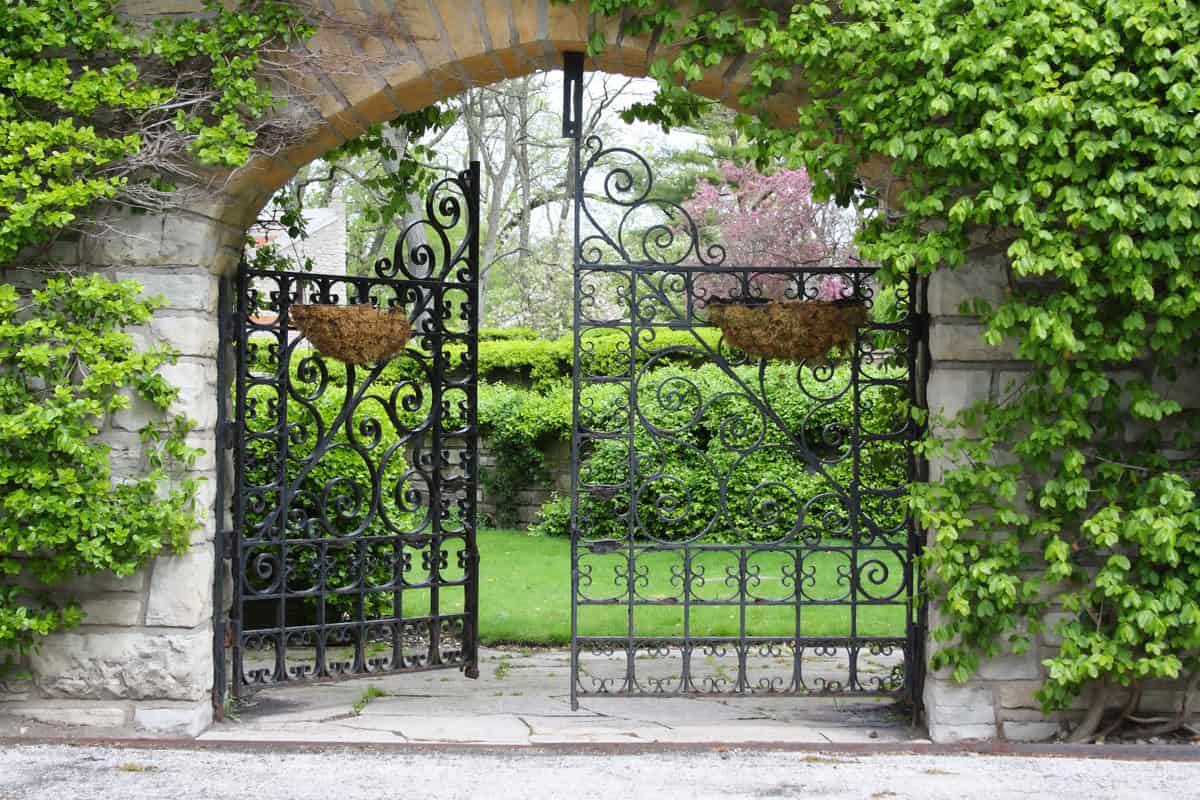
Garden gates enhance the aesthetics and feel of your home without sacrificing functionality. They offer privacy, shield your garden from being trampled on by animals and pets, and keep plants from becoming food for stray animals.
Choosing an appropriate size for the gate makes it easier to walk in and bring a lawnmower or wheelbarrow to the garden without straining. Often, a width of three to four inches is sufficient.

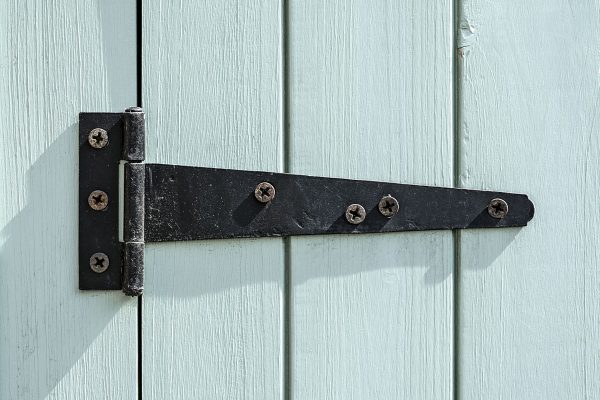
![A long black sliding metal gate for a private high end property, Can I Open My Gate With A Smartphone? [And How To]](https://fencefixation.com/wp-content/uploads/2022/05/Can-I-Open-My-Gate-With-A-Smartphone-And-How-To-600x400.png)
